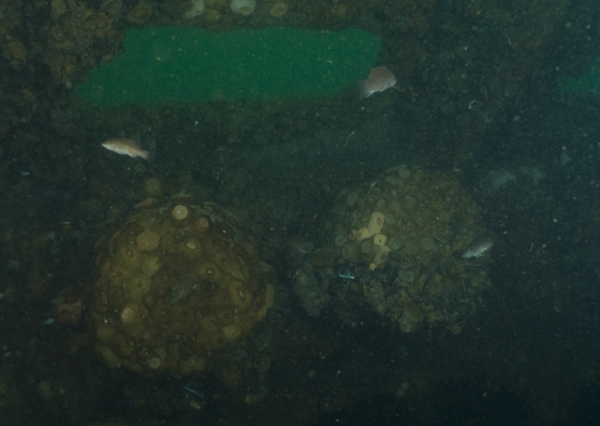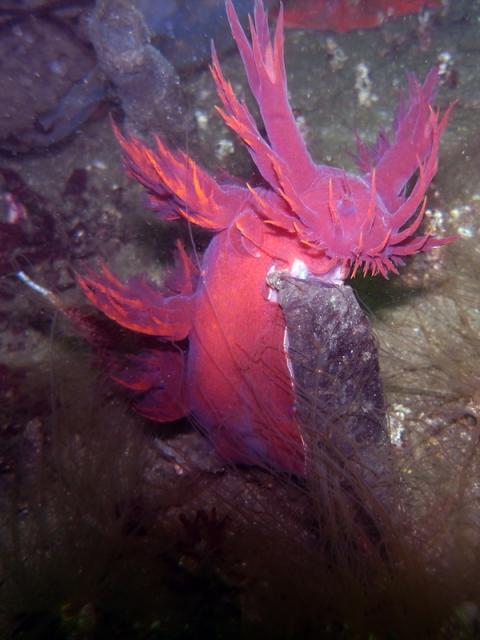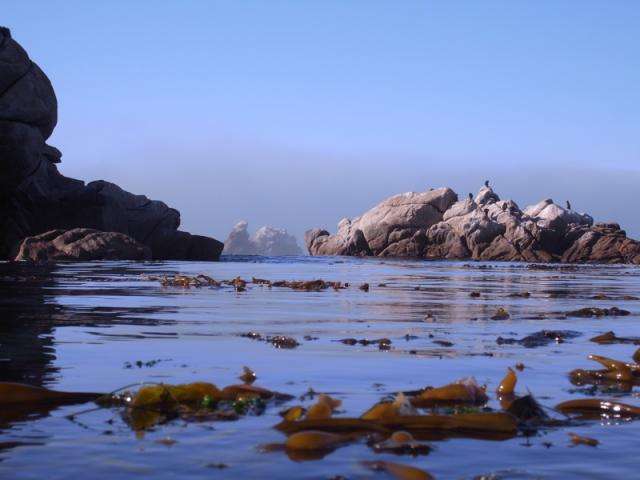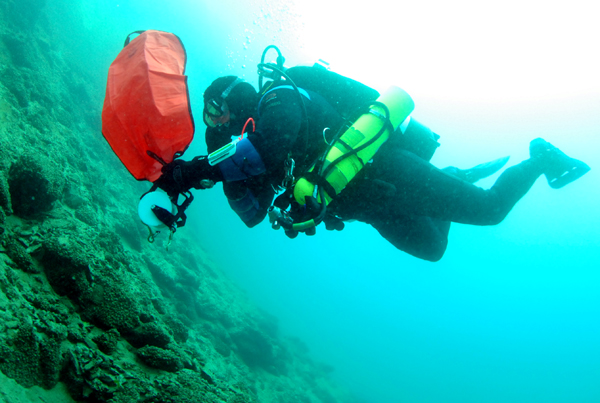KISS Rebreathers is launching some new gear, and a new web site: www.KissRebreathers.com. The site makes it easy to find information on KISS equipment, replacement parts and accessories. They also have media from carrera obstaculos hinchables some of the photographers and videographers that dive using KISS equipment. Check out the site for more details, and some really stunning photos.
Posts Tagged ‘rebreather’
New KISS Rebreather Website
Wednesday, March 14th, 2012This time I brough the camera!
Friday, September 23rd, 2011Too often, I’ve had some fantastic diving experiences but can only share them with words. California is one of those experiences. I have sworn to myself that I will never again dive without a camera.
Here on the east coast our shore is composed of white sandy beaches. Great for sunbathers, but not much to look at for divers. Other hinchables juegos coasts have rocky shores. On rocky shores, fish have places to hide, plants have places to take root.
The west coast enjoys these rocky shores. Kelp anchors to the seabed, and a variety of sea life thrives in it’s shelter. While east coast diving is all about shipwrecks, west coast divers can simply drop in the water and enjoy diving the kelp beds.
Last week I had another opportunity to dive California’s underwater forests. On my first trip to CA, my 35 mm film camera failed me, and I came home with only memories. My last trip, I was involved in some intensive training, and did not bring the camera. This time, I was taking pictures one way or another.
The reason for the trip revolved around training, again. This time I was working on an instructor cert on the new KISS GEM pSCR. After diving the unit for many weeks in our local quarry, I felt comfortable in it’s operation. Now I had to teach others. My IT set up the class that involved system operation, buildup, pool and open water. The first portions went quickly, and we were soon discussing open water.
In the Monterey area, there are many options for open water dives. After a few discussions, the decision was on Point Lobos, a small peninsula south of Carmel. The area is mostly state park with some fantastic vistas. Shore entry is in a small lagoon with a facility for divers. Upon arrival we were greeted by local divers, and quickly discussed conditions prior to their second dive. Our entry was uneventful, and we were soon swimming through the kelp beds. There is no comparable feeling in Northeast diving.
The next day Alan borrowed a friends boat, and we headed to the Monterey marina breakwater. I’m sure there are better placed to dive, but on my last visit we saw many Rainbow Nudibranchs close to the breakwater. We have no such creatures here in the Northeast, so I expressed my fascination, and desire for a picture.
While preparing the boat and gearing up, we observed a number of large red jellyfish floating near the surface. I gathered as many photos as I could on the surface, and anticipated seeing them in the water. After a quick boat trip and back roll entry, we headed down to find the anchor a few inches from a line Alan placed a few years earlier. Over on the breakwater we heard the Sea Lions barking above us and the shrimp crackling in the rocks. Between drills and sea lion fly byes, Alan helped me snap a few shots of the abundant flora and fauna.
After the class, I spent my preflight surface interval photographing the topside environment. Seals, sea lions, pelicans, … all posing for the tourist. It was a great trip with lots of things to learn. If you ever have the opportunity to visit, I highly recommend getting wet.
Class Photos, Fall 2010
Wednesday, December 15th, 2010This fall in the Northeast was a bad season for blowouts and poor visibility. Several hurricanes passed by, stirring up the surf. Often, this can help the conditions by mixing the surface water with the cooler water below the thermocline. Unfortunately this fall it cleared out the plankton on the surface, then just stirred up the bottom into soup. At this point, the surface had over 50 ft of visibility, but the bottom would drop to less than 5. That’s on the days we could make it out.
On the plus side, this gave me the opportunity to drag some students up to Dutch and finish up classes. Once most of the drills are done, I dragged the camera along to grab a few shots. After this fall, I needed the practice or I’d forget how to work the housing. Also, I’m playing with a new lenses/port combination that takes some getting use to. For what it’s worth, here are some of the photos that came out well.
Count the Counter lungs
Tuesday, October 12th, 2010A friend just asked an interesting question: Why have two counter lungs vs one?
I must admit, that no one ever told me an answer to this question, but here is my reasoning for 2 vs 1:
One counter lung only lets the scrubber work during half of the breathing cycle.
If the lung is on the exhale side, then it inflates on exhale, but gas only passes through the scrubber on inhale.
If it’s on the inhale side, then gas passes through the scrubber only on the exhale.
If you have two counter lungs, half the gas passes through the scrubber as you exhale, and half passes through as you inhale. This makes the gas pass inflatable Canada through the scrubber slower, (aka dwell time) and therefore the scrubber is more effective. I would also assume that the slower gas movement would decrease the work of breathing of the unit.
Good to get wet
Monday, September 13th, 2010
Mooring Bits
After a few students backed out on my Saturday dive, I reviewing the weather forecast, and checked with Roger to see if there was any room. As it turned out, they needed crew for a student dive. Life is good. My gear was already prepped and packed, just set the alarm.
The morning was calm with some light clouds. The boat was quickly packed, and we were headed out in nearly flat seas. Given a group of open water students, bouncy castle the destination was for an inshore wreck in less than 60 ft of water. In my mind, that means more bottom time, and perhaps fluke.
On the way out, I found out that only half of the group was in Open Water, and the rest were newly certified divers getting in some more practice. This became evident by the number of question about my KISS Rebreather. Not wanting to take attention away from an instructor with a class, I tried to be polite, but kept the answers short.
We were quickly at our destination and Chris jumped in as I threw the hook. Within minutes he had us tied in, and we started getting everyone geared up. The students went in last as the other divers went in armed for some of the Tog this wreck is know for. By the time they were in, Chris was up with a vis report. Not good.
I tried to keep a positive attitude, and rolled in with the camera. The surface was a little cloudy, but the bottom was downright dark. Vis on the bottom was 5-10 at best. I’m not familiar with this wreck, so out came the reel. I left the gun topside as light, camera, reel, and gun just seems like a bad combination. Of course, I immediately ran into some nice Tog on top of the wreck, and a fair size fluke as soon as I hit the sand.
The wreck was mostly intact with some areas where you could penetrate. A quick inspection for lobster came up blank. The camera was just about useless. Some part of me was tempted to go back up and exchange it for my spear. Instead, I fell back to my age old plan of just looking around when on a wreck for the first time. Even in the tight vis, there was lots to see. In addition, it’s good to just practice using the camera controls and playing with different settings. It was good to get wet without students of my own to watch.
After a complete loop around, I doubled back. I could hear some of the divers starting their second dive, so I headed back to the boat. We got the class back in the water, and Chris prepared to pull the hook. Once everyone was aboard, we were quickly free, and on our way home.
Back at the dock we set to work cleaning fish and the boat. The new divers were obviously excited about the dives, and asking when they could go again. I only wish I could have gotten some pictures for them to remember the day by.


